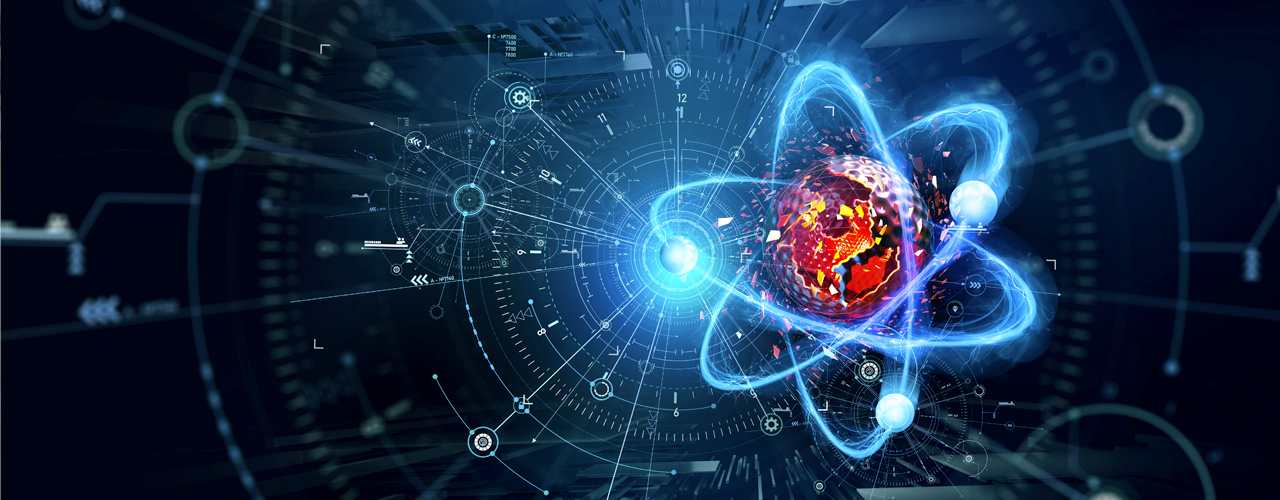
- A+
- A
- A-

Prof. Deepak Dhar, Boltzmann Medallist 2022
Prof. Deepak Dhar’s research in statistical physics has brought the first Boltzmann medal to India. He shares the coveted honour with American scientist Prof. John J. Hopfield, who is known for his invention of an associative neural network.
When asked about the significance of this accolade, Prof. Dhar states with utmost humility, “While it is true that I am the first Indian to win the Boltzmann medal, I am not the first person whose work in statistical physics is significant”. He emphasizes that the stellar contributions of Indian stalwarts in physics such as Meghnada Saha and Satyendra Nath Bose, while absolutely deserving, could not be decorated with awards as there weren’t any in those times.”
Origins of his scientific temper
Prof. Dhar’s interest in science was cultivated by his father, who would bring home popular science books and persuade him to read. He joined Allahabad University (AU) as a National Science Talent Search (NSTS) scholar for a BSc degree Course. His NSTS advisor Vipin Kumar Agrawal would encourage him to read science outside the textbooks. The ‘summer camps’ conducted for NSTS scholars drew his energy and interest in science. He recollects, “We would go to institutions to hear specially designed lectures by eminent scientists and professors, which helped me build scientific curiosity.
When Prof. Dhar moved to IIT Kanpur (IITK) to pursue a master’s degree in Physics, he met several fellow students who were keen to pursue academic careers. This was a very different peer group from AU where most students were inclined toward Indian Administrative Services. At IITK, Prof. Dhar also got an opportunity to interact with lecturers such as HS Mani, DC Khan and Kalyan Banerji.
From IIT to Caltech
After his Master’s at IITK, Prof. Dhar choose the California Institute of Technology (Caltech), the USA for his PhD. He remembers, “Caltech was very well known for research in high energy physics. I was not sure what I was going to do, but it seemed like a good place to try”.
As he arrived in the foreign country, he was picked up at the airport by a local host arranged by the student welfare office at Caltech. To facilitate acclimatization, new students had to stay with the local hosts at their house for two-three days. Recalling how he struggled with the unfamiliar American accents during his early days at Caltech, Prof. Dhar shared what helped him, “I remember the very important words of my host — Don’t be afraid”.
Prof. Dhar started his PhD work at a time when the work of Prof. K.G. Wilson (Nobel Laureate, Physics, 1982), the first recipient of the Boltzmann medal in the year 1975, on renormalisation theory had just been gaining recognition. Prof. Dhar emphasizes, “Researchers were beginning to understand phase transition and were trying to answer intriguing questions. For example, why does ice turn into water on heating? What happens when two ions collide?” Smitten by such questions in high energy physics, Prof. Dhar chose to pick up phase transition studies for his PhD.
Setbacks and learnings
In hindsight, Prof. Dhar remarks that his attempts at solving a very difficult problem may have been a little amateurish. He worked on a model of 3D solid melting, which he would later discover to be not particularly applicable. Nevertheless, he gained many interesting insights while working on it. “The learnings from this experience are something that students can take away from”, he remarks. “Certain aspects of research may not work all the time, but it always yields positive learning outcomes that may be useful in the future”.
His advice to students is very realistic: “You must have confidence and should be aware that while a PhD may not necessarily be your best work, it is surely a period of skilled training”. In research, one can always do better work post-PhD, so one must avoid getting trapped in any emotional anguish if their PhD work isn’t as interesting as they hoped, he insists.
Prof. Dhar shares another experience that brought about a similar realisation. While working as a teaching assistant with Prof. Richard Feynman (Nobel Laureate, Physics, 1965) he had to perform the task of grading student assignments. “Though I followed the standard marking scheme”, Prof. Dhar remembers, “Prof. Feynman didn’t approve. He asked me to come up with a system to distinguish between students who get 9 vs 9.5 vs 10”. Reflecting on that incident, Prof. Dhar comments, “I think the point is that even students who score 9.5 should feel that they can do better. The current state of grade inflation where some 15 students in a university get 100/100 is not very desirable. It gives a wrong message to students”.

Image for representation purposes only
A post-PhD career in India
Prof. Dhar returned to India to join the Tata Institute of Fundamental Research (TIFR) as a postdoctoral fellow in 1978. TIFR was a vibrant and free place where Prof. Dhar would have scientific discourses with peers from astrophysics, high energy physics, and even biology. He discovered a fellow scientist and friend in Prof. Mustansir Barma with whom he published several papers. While Prof. Dhar did not have any mentor per se, a strong peer group and the conducive atmosphere at TIFR anchored him to lead his own research.
In a four-decade-long career at TIFR, Prof. Dhar witnessed several changes to scientific research. “Certainly, the money spent in science is huge now than it was 40 years ago. You cannot expect today’s science to work at the level of funding that Raman got”. He opines that this has brought its own perils as more people in research results in competition and pressure to publish. “People read much less and write much more, which I think is not always a good thing”, he adds.
Currently teaching undergraduate students at IISER Pune, Prof. Dhar wishes the students to perceive statistical physics as a different way of looking at multi-component systems that possess multiple degrees of freedom. He clarifies that while one may not be able to predict exactly what happens to each individual constituent, still predictions about the bulk may be made quite reliably. This is the power of theoretical modelling.
New frontiers in phase transition research
When probed about the possible emerging areas in phase transition research, Prof. Dhar comments, “There are phase transitions of consciousness. When one dies there is some kind of phase transition too. What is the difference between the living and dead when the hair/nail/beard keeps growing even after death? What kind of phase transition happens when a single cell divides into two?”
Talking about one of his award-winning research on self-organised criticalities (SOC), Prof. Dhar quotes the work of Per Bak and colleagues. He informs that many natural phenomena such as solar flares, earthquakes, biological evolution and firing of neurons in the brain can be potentially described using the SOC hypothesis. “More research must follow for finding applications of SOC. For example: not only understanding how earthquakes happen but rather be able to predict them as well”, he adds.
As a theoretical physicist, Prof. Dhar describes ‘simplification’ to be the most intriguing aspect of theoretical modelling. As real-life problems are usually very complex, ‘simplification’ requires that one gets rid of unnecessary elements while retaining the essential details. This makes the problem tractable and easy to understand. He quotes the idiomatic expression ‘don’t throw the baby out with the bath water’ and describes that the distinction between the baby and the bathwater is the key part of ‘simplification’ in theoretical modelling.

Image for representation purposes only
Upcoming statistics research in India
Prof. Dhar thinks that recognition of his research may motivate students to explore statistical physics as a research career option and inspire the statistical physics community to take up more challenging areas with greater confidence. He informs that the statistical physics community in India has been strong lately and clarifies, “Most of the work which was cited in this award has been done 20 years ago. The work was always valuable”.
Prof. Dhar believes that one does not do science to get an award. It is rather an incidental side benefit that may come in time. For him, the actual benefit is the satisfaction that he has derived from doing interesting work and generating new knowledge.
As Prof. Dhar looks forward to the medal presentation ceremony at the StatPhys28 conference to be held in Tokyo in August 2023, the physicist in him is rather impatient to listen to conference presentations from the best researchers in statistical physics.

Image for representation purposes only




